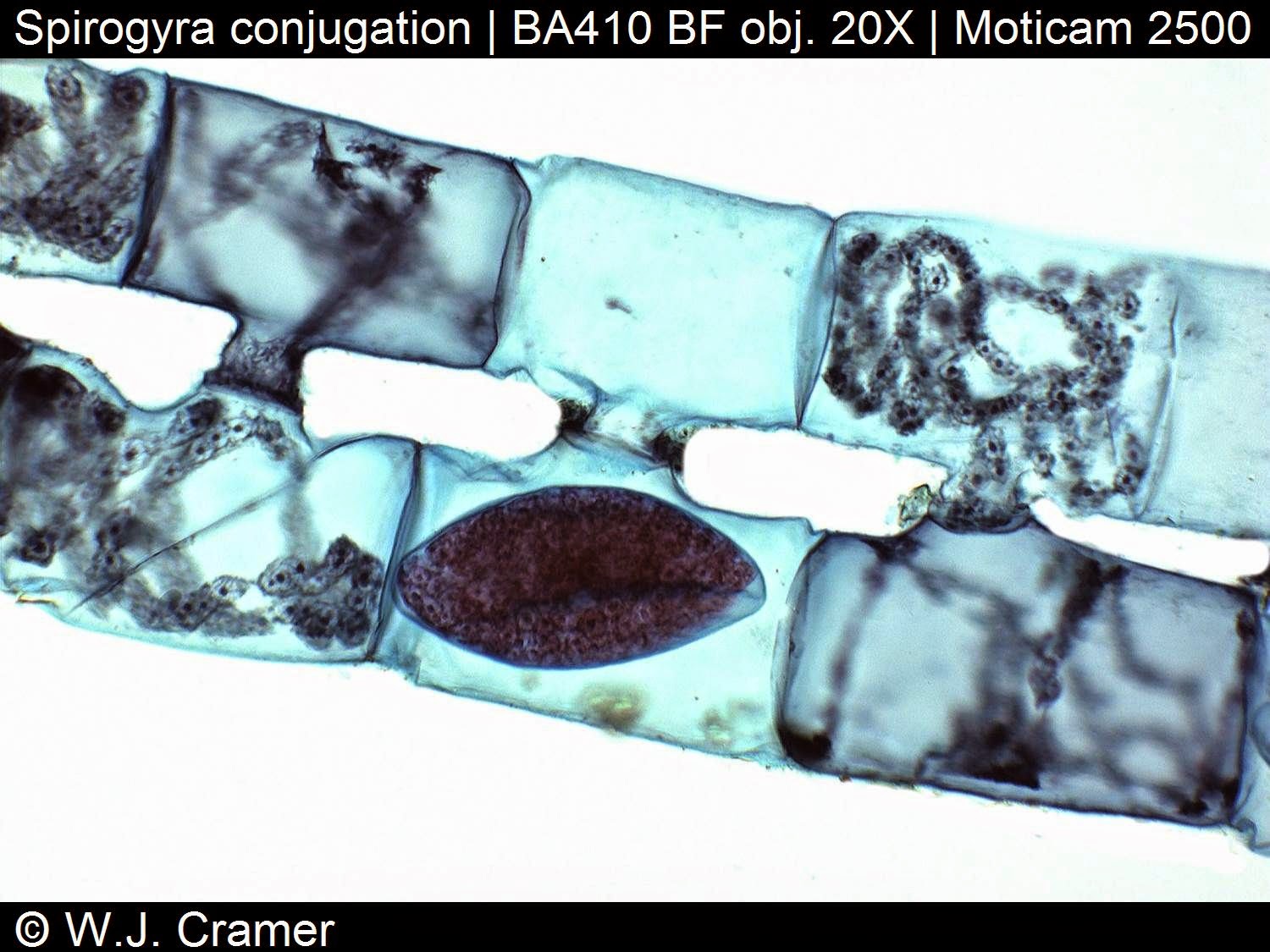Algae have sex too! (at least some of them, though who knows if they enjoy it?) Amongst the Zygnemaceae, the process of conjugation consists of the joining together of the contents of two haploid cells from (usually) different filaments.
Conjugation in Spirogyra: the filaments show the typical results of scalariform ('ladderlike') conjugation. Two filaments lie parallel, and outgrowths from each filament grow towards each other, and then fuse to form a conjugation tube. The conjugation tubes allow the contents of one cell to transfer to the other. The dark oval shapes are diploid zygospores, formed after nuclear fusion between the two haploid cells. They form in only one of the two filaments. Sometimes more than two filaments take part in conjugation like a 'menage a trois'.
Spirogyra is a filamentous green alga in which the chloroplast has a characteristic spiral shape. In one of the photographs, you can see the chloroplast coiling against the outer edge of the cells. The numerous small round blobs along the edges of the chloroplast are the pyrenoids. The larger, faint blobs (they look like out-of-focus regions) that take up most of the volume of the cells in the filaments on the right are the nuclei, which are suspended in the interior of the cells.
Pyrenoids occur in many of the algae and are associated with the chloroplasts. Some of them are known to contain Rubisco, the enzyme that catalyzes the incorporation of inorganic CO2 into carbohydrate (Graham and Wilcox, 2000). In these algae, pyrenoids probably function to fix carbon. In other algae, pyrenoids are the sites of carbohydrate (typically starch) storage. Starch and iodine react to produce a deep blue- black color, so staining a thin algal prep with iodine will indicate the presence of pyrenoids.
Sources: Algalweb, MadSci Network



No comments:
Post a Comment